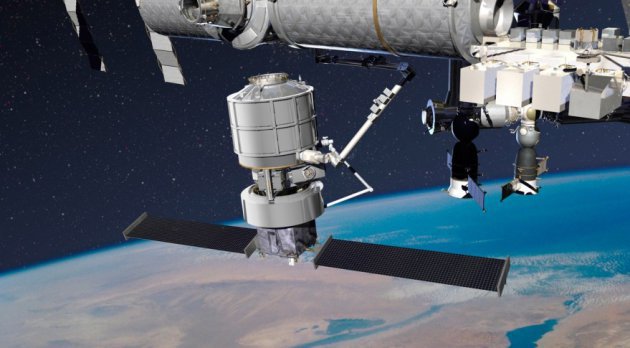Lockheed plans to build its reusable spacecraft

The most expensive part of space flight is payload delivery. But since humanity is expanding its extraterrestrial presence outside the ISS, planning to go back to the Moon and fly to Mars, the space powers turn to reusable spacecraft that can do the hard work. Currently, only 2 vehicles are reusable space trucks: Cygnus and Dragon. Lockheed Martin decided to change the situation by proposing his spacecraft.
Jupiter is a reusable part of the system that will work with the disposable Exoliner module. Both Jupiter and Exoliner will be put into orbit by an Atlas-V rocket, after which docking with the ISS takes place.
As soon as the ISS team unloads the load of the Exoliner module, it will begin to fill the container with debris formed at the station. Jupiter, which will rotate in a low earth orbit, will first undock the old Exoliner from the ISS, then take over the new Exoliner and soon the one-time models will change places - Jupiter will deliver the new Exoliner to the ISS for docking, while the old one loaded with garbage will burn entering the atmosphere of the earth.

Jupiter can also launch commercial satellites into orbit. In addition, the system offered by Lockheed can be adapted to send astronauts to the planets of the solar system. “Although our priority will be to service the ISS and provide the possibility of launching small satellites into orbit, the system is initially designed for future human flights to deep space,” said Josh Hopkins. "This means that NASA will be able to fly manned space flights beyond low-Earth orbit without the need for huge investments."

')
Source: https://habr.com/ru/post/377353/
All Articles